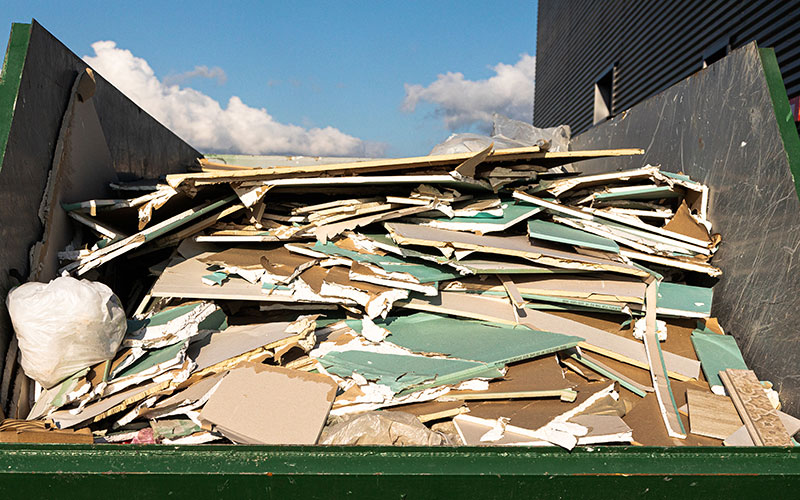
Plasterboard, also known as drywall or gypsum board, is a common building material used in construction. It is a versatile material, but it can pose a challenge when it comes to disposal. In the UK, plasterboard waste is classified as non-hazardous waste, but it must be disposed of responsibly to minimise its impact on the environment.
Why does plasterboard pose a risk?
Plasterboard is a relatively fragile material that requires careful handling to avoid damage or breakage. There are a few risks associated with plasterboard when it is damaged or stored improperly.
Health risks
When plasterboard is broken, it can release dust and fibres that can be harmful to human health if inhaled. These dust and fibres can cause irritation to the eyes, nose, and throat, and can also trigger respiratory problems such as asthma.
Hydrogen sulfide gas
Plasterboard can release hydrogen sulfide gas when moisture in the air reacts with the sulfur in the material. This can be hazardous in high concentrations. Disposing of plasterboard improperly, such as mixing it with other waste or breaking it up into small pieces, will make this more of a risk.
How should you approach plasterboard disposal?
Hire a professional waste disposal service
These companies have the expertise and equipment to handle plasterboard waste safely and responsibly. As well as for peace of mind, you may want to consider hiring a professional waste disposal service if you want to spare yourself the time and hassle involved in the disposal process.
Check with your local council
Rules and regulations for the disposal of plasterboard waste can vary depending on your location. If you decide to dispose of your own plasterboard it is always a good idea to check with your local council to find out about any specific guidelines or restrictions that apply in your area.
What are your disposal options?
Plasterboard waste should be separated from other waste to make it easier to handle and dispose of. This will also help to prevent contamination of other materials, making them unsuitable for recycling or reuse. Mixing plasterboard waste with other materials can also make it more difficult to dispose of properly, as it may require special handling or treatment.
Recycle plasterboard waste
Recycling plasterboard is a sustainable option that can help to reduce waste and conserve resources. Some recycling facilities accept plasterboard waste and process it into new products. You can check with your local council or waste management company to find out if there are recycling facilities in your area that accept plasterboard waste.
Reuse plasterboard waste
Plasterboard waste can also be reused in construction projects. For example, it can be used as a soil conditioner or as a base material for new walls. You can consult with a professional builder or construction company to find out if there are any opportunities to reuse your plasterboard waste.
Disposing of plasterboard – The key points
In conclusion, the disposal of plasterboard requires careful consideration and handling to minimise its impact on human health and the environment. Plasterboard is a fragile material that can release dust and fibres if broken or mishandled, and it can also produce hydrogen sulfide gas if disposed of improperly. Therefore, it is recommended that individuals consult with a professional waste disposal service to ensure that their plasterboard waste is handled and disposed of responsibly.
By taking the necessary precautions and following the guidelines for plasterboard waste disposal, we can reduce the amount of plasterboard waste that ends up in landfills and promote sustainable waste management practices. It is essential to prioritise responsible waste management, and by working together, we can protect our environment and safeguard public health.
- 01322 303080
